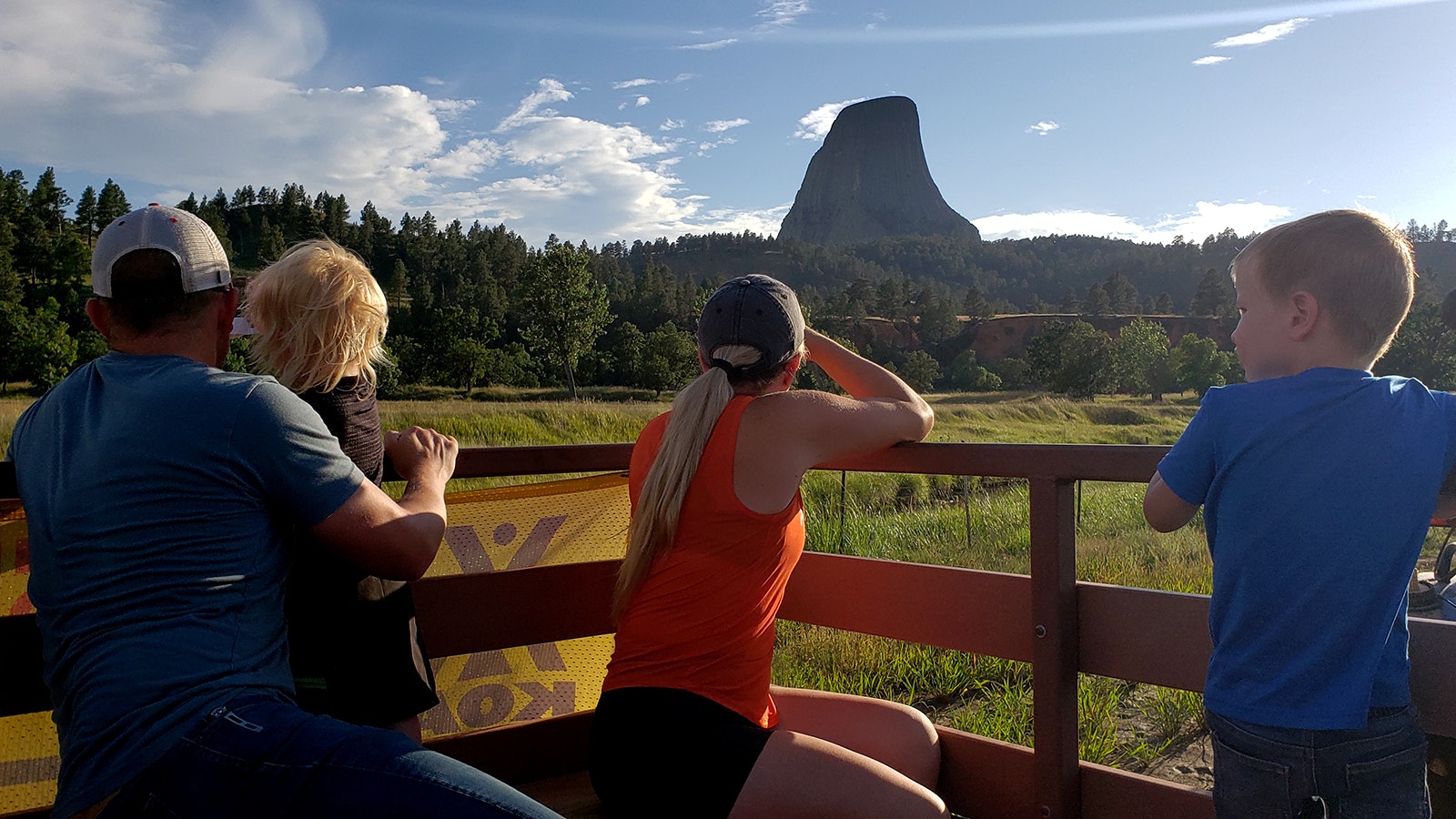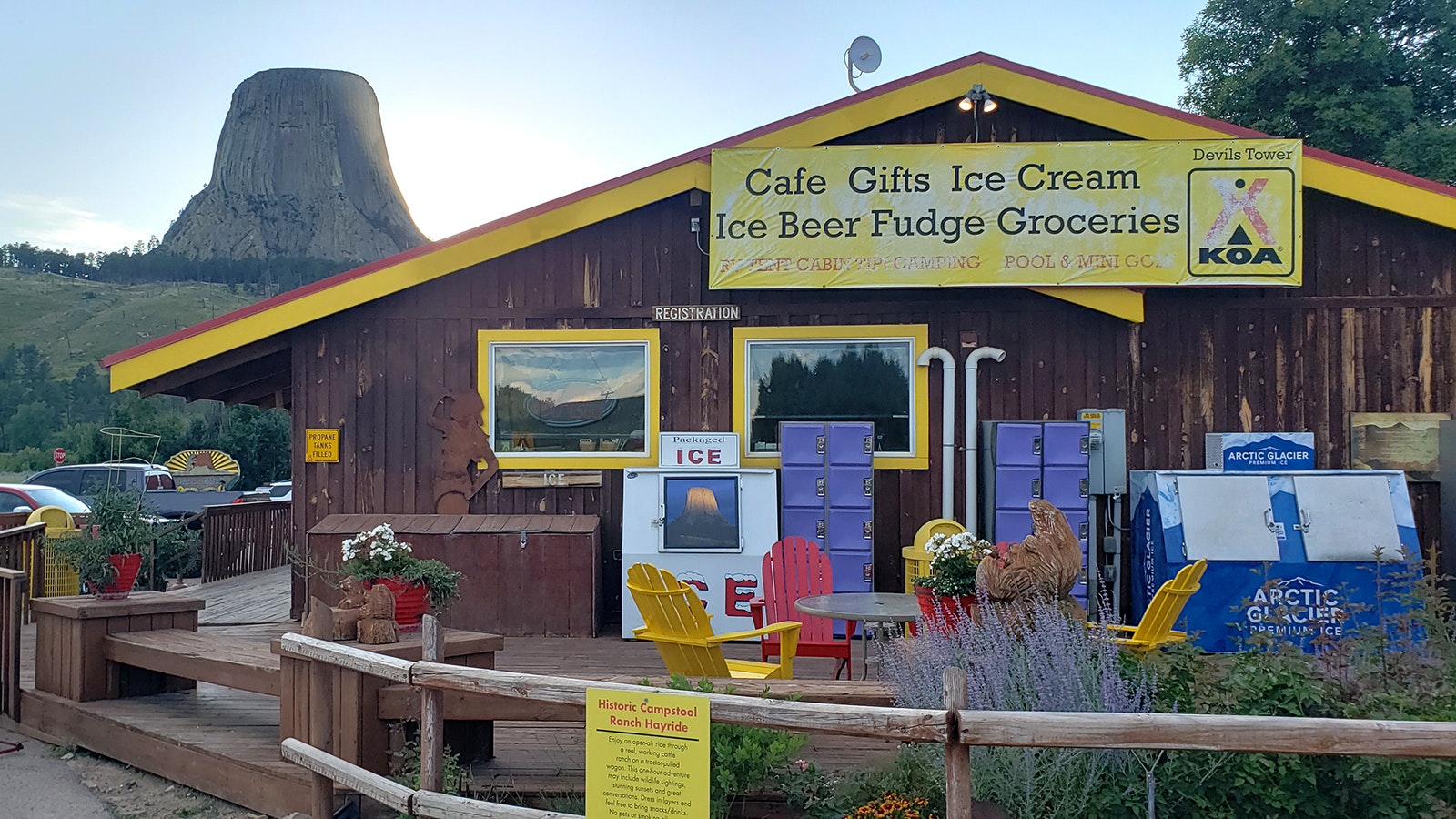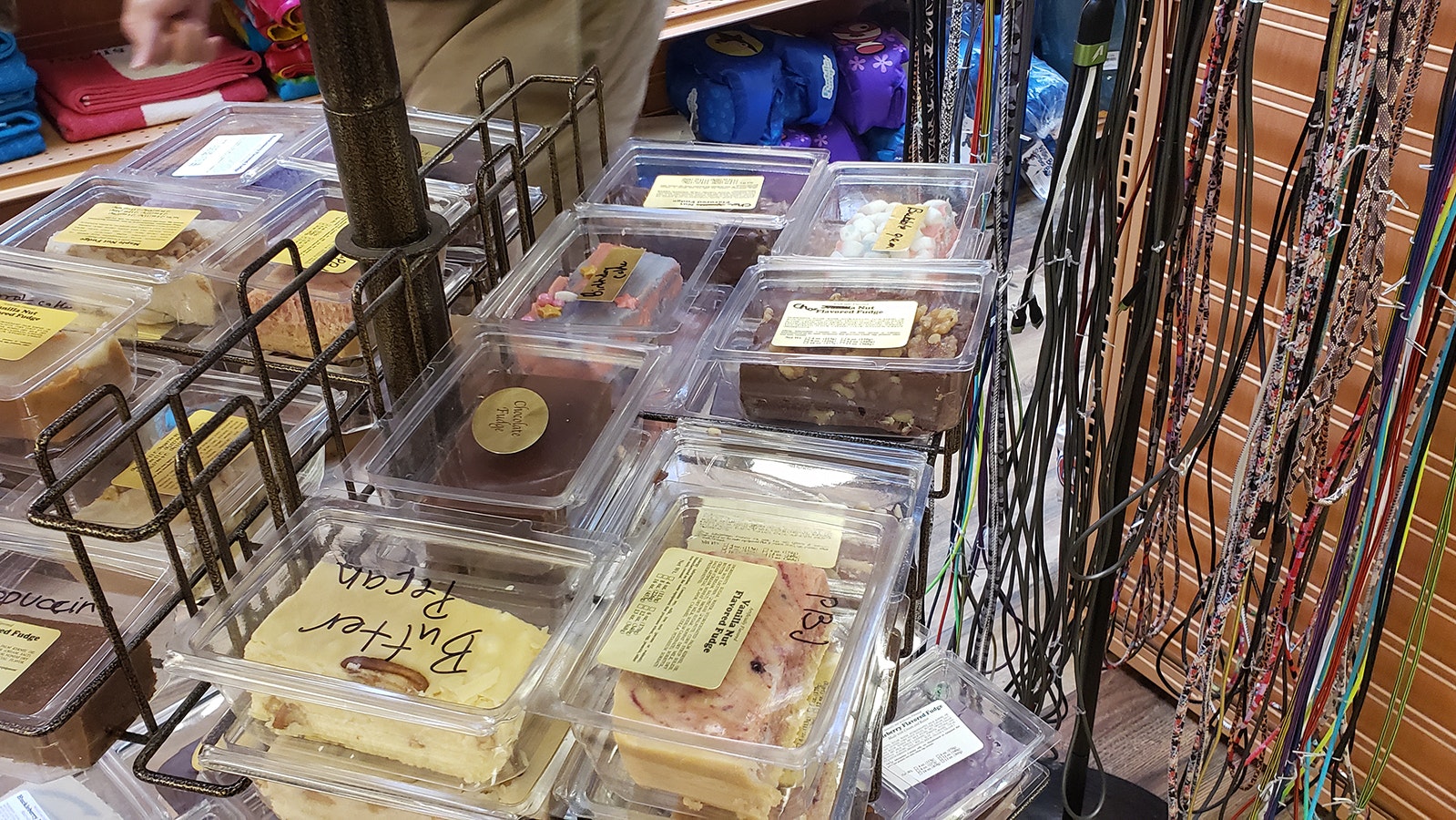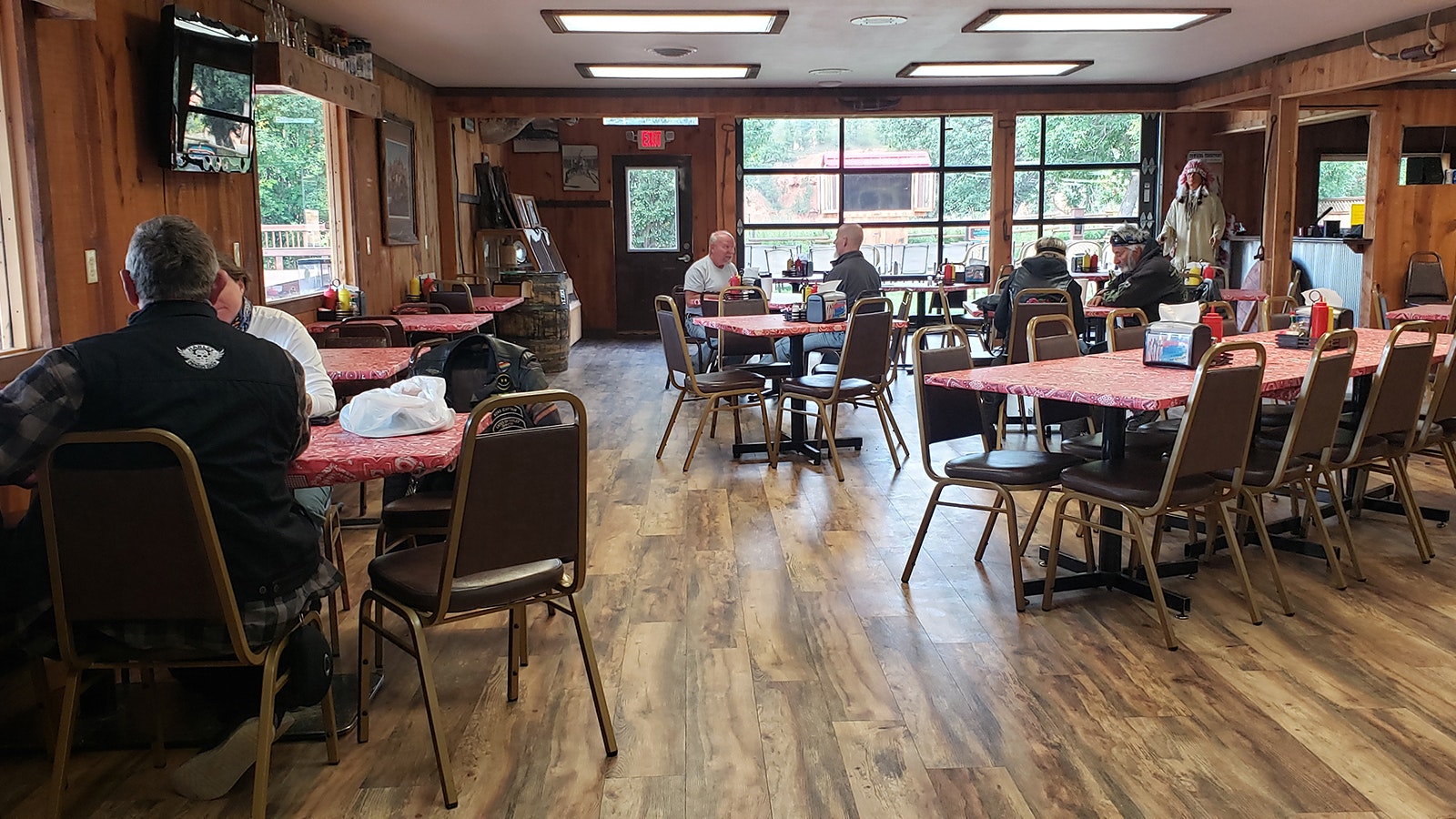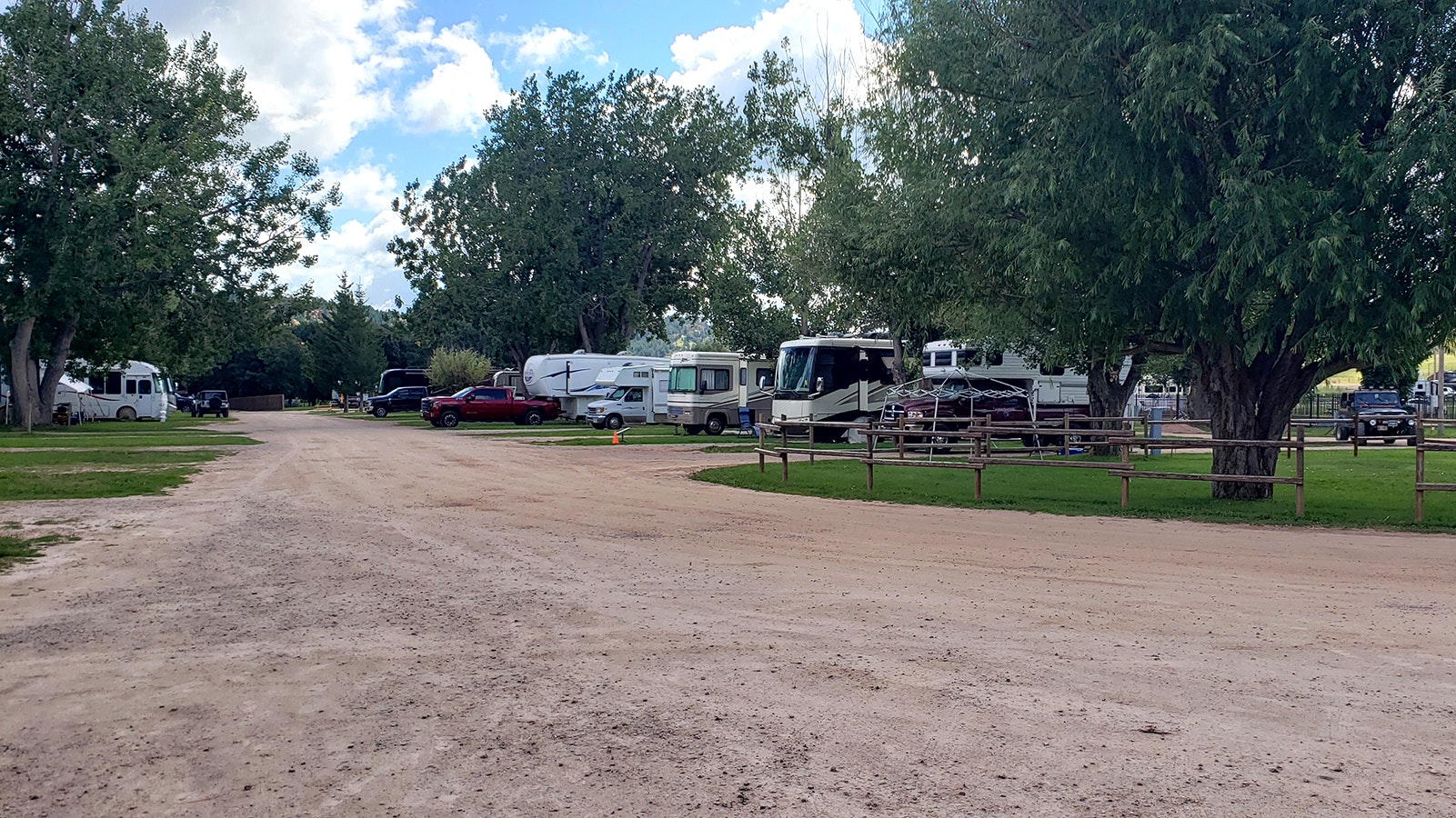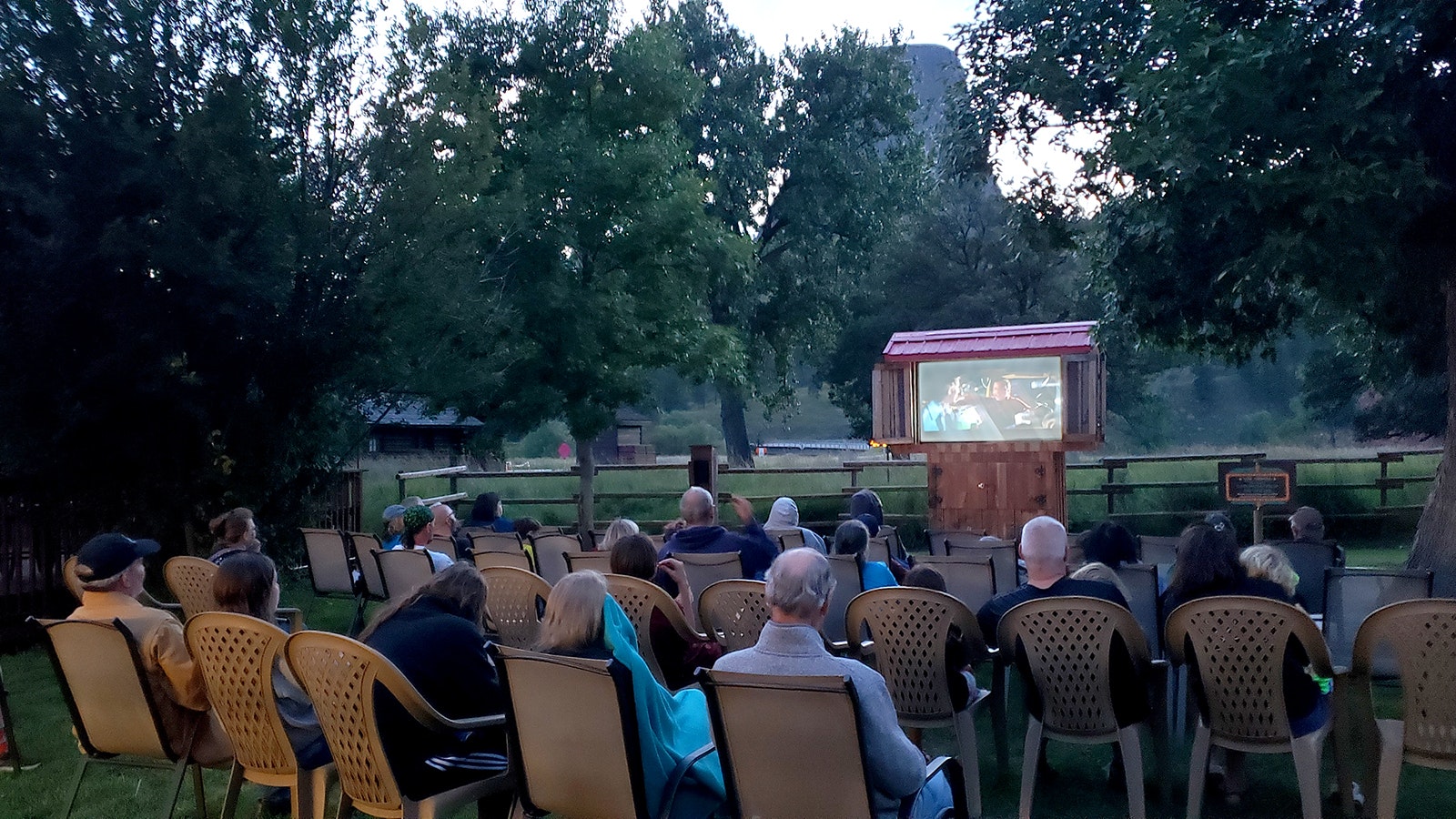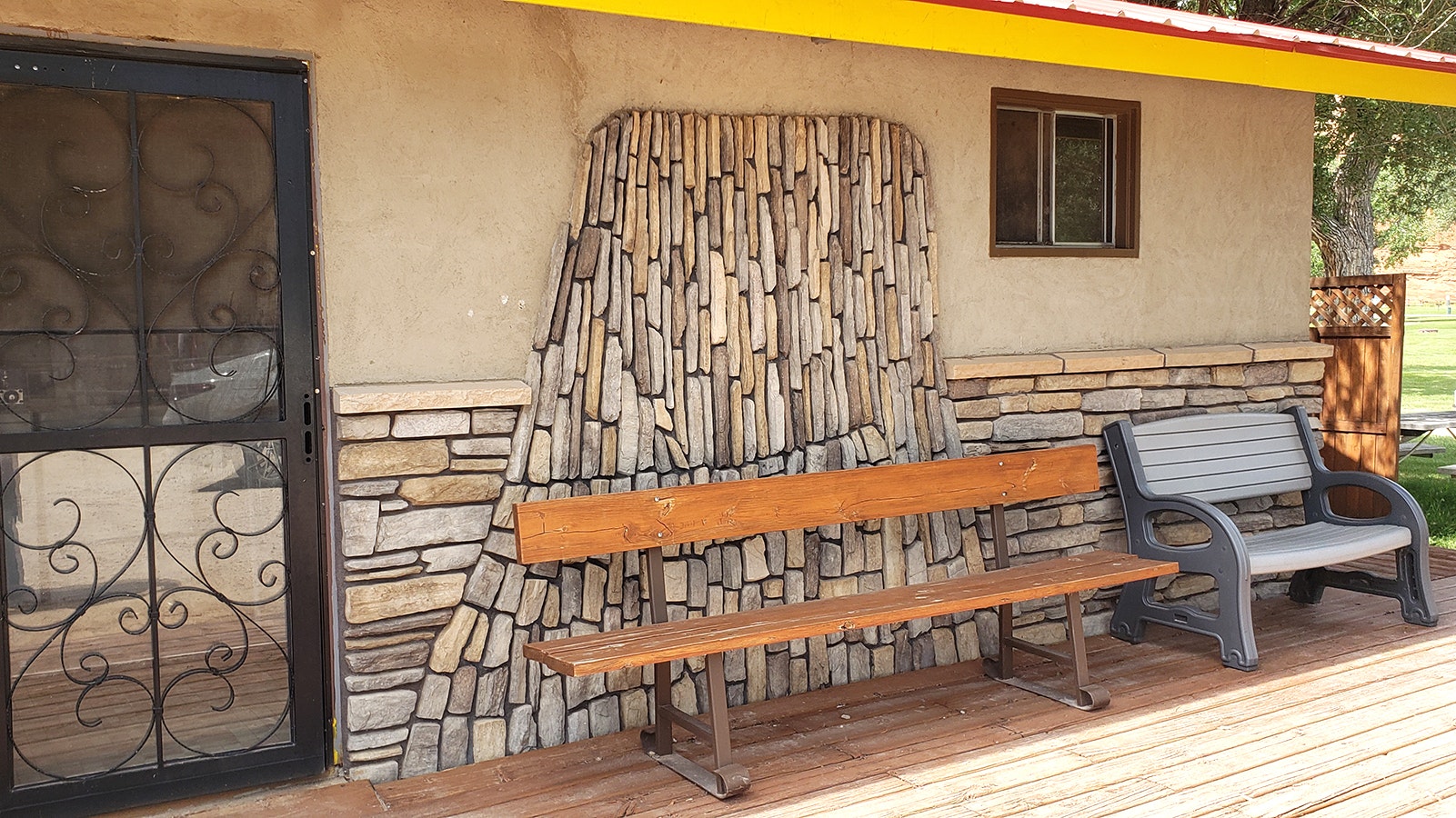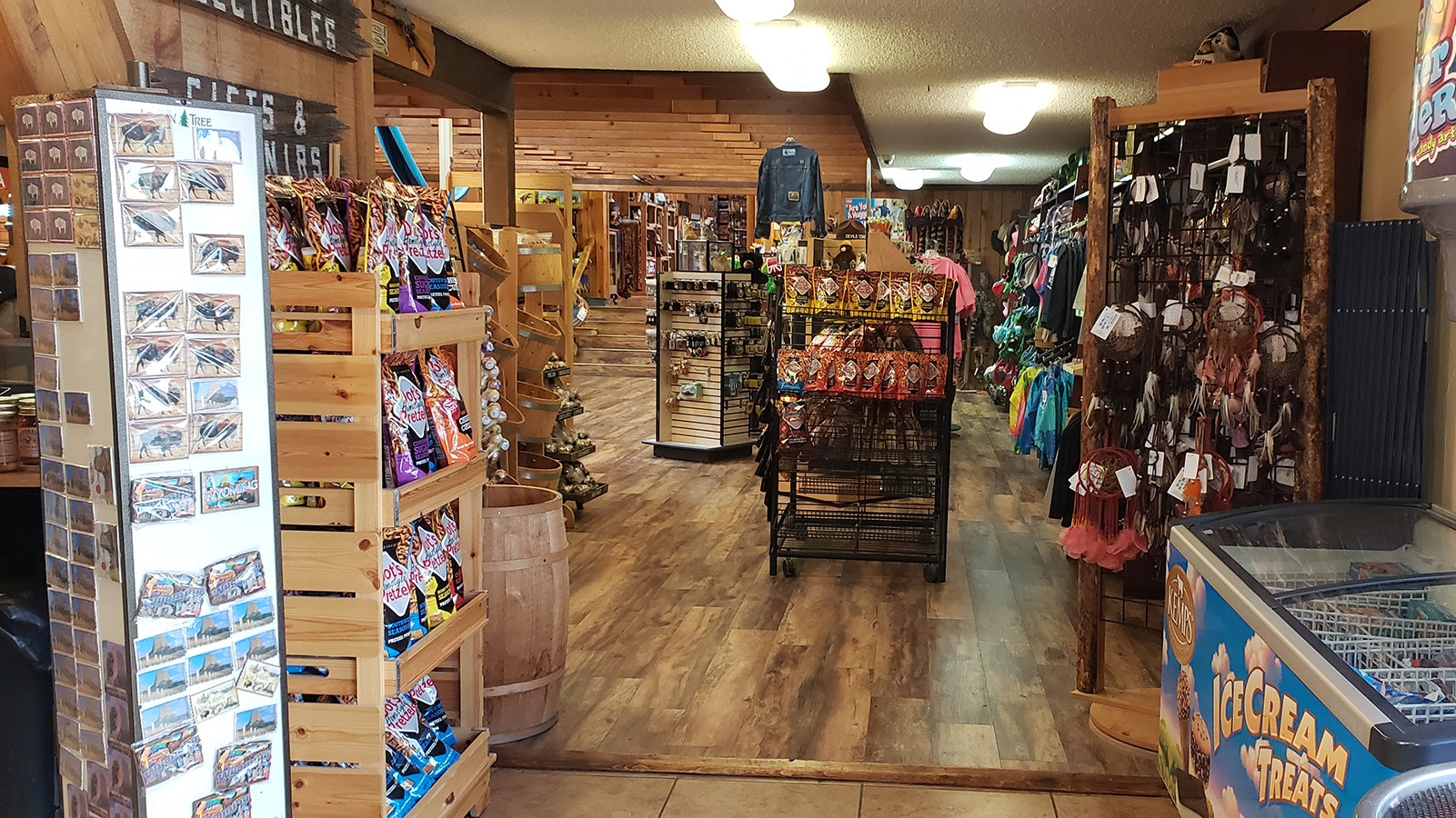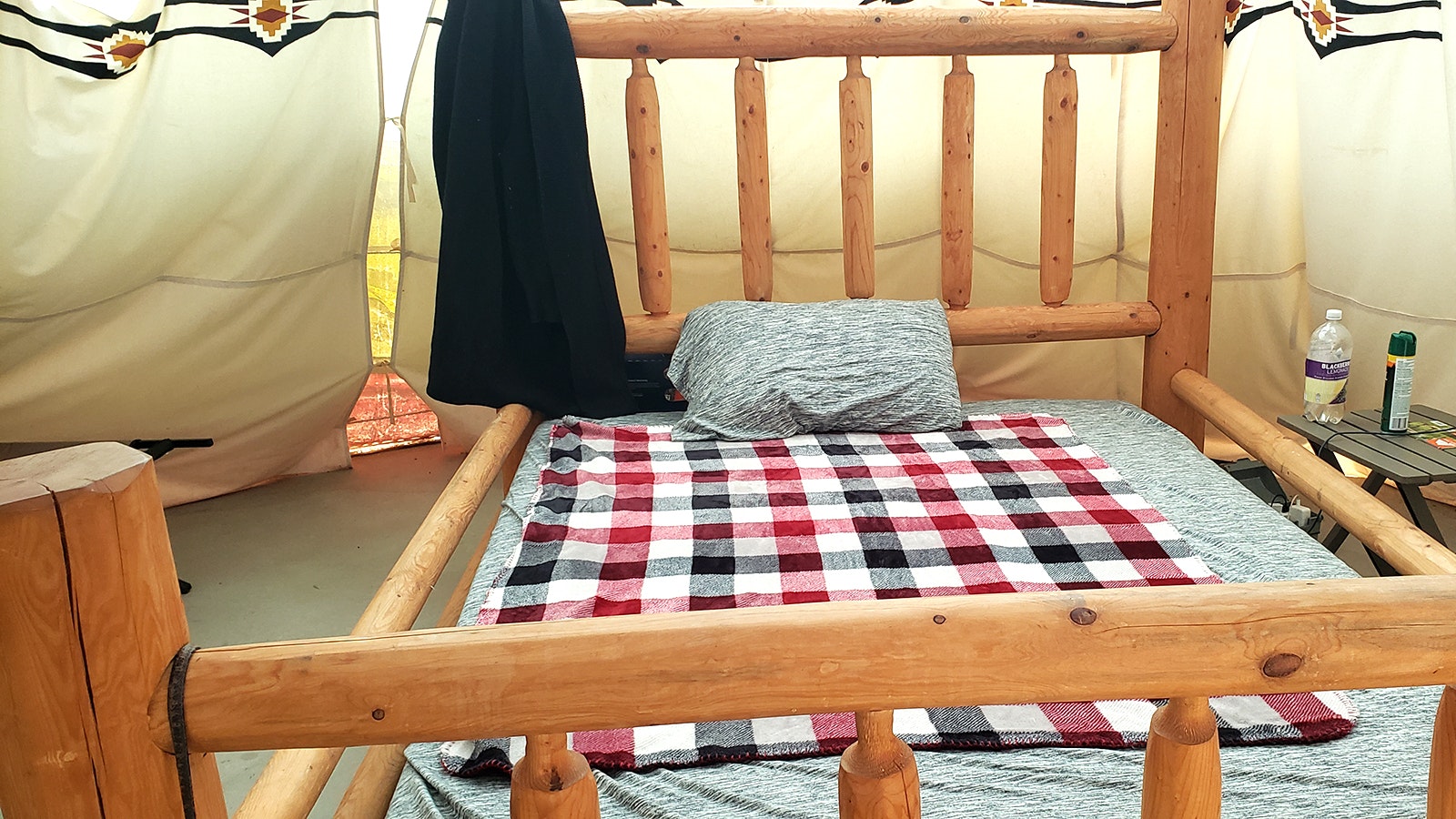DEVILS TOWER — What was once a common hayfield is now an uncommon campground.
The Devils Tower KOA campground is No. 1 in the national campground system for having above 90% occupancy on one-night stays during the summer season.
A lot of that is location.
“We’re the perfect distance from Mount Rushmore to Yellowstone,” Zannie Driskill, who co-owns the Devils Tower KOA with her husband Ogden, told Cowboy State Daily. “So, if you leave Cody, you get here late afternoon or early evening. And if you leave Mount Rushmore, you get here, you know, a little after lunch and you can be here all day. And if you jump up the next morning, you can be in Cody without traveling too hard or anything.”
But there’s more at work here than just near-perfect distance from two world-famous landmarks.
The campground itself is a one-of-a-kind experience. It’s located just below Devils Tower, the tallest columnar formation of its kind in the world, and it’s where Steven Spielberg filmed “Close Encounters of the Third Kind,” a 1977 box office smash that set records and helped rescue Columbia Pictures from bankruptcy.
Devils Tower was also one of the sacred places chosen by Morgan Freeman for his documentary, “The Story of God.”
“Close Encounters of the Third Kind” is shown on a large outdoor screen at Devils Tower KOA every single night the campground is open, rain or shine. It had a healthy audience for a recent August showing, with 30 to 40 people watching.
Devils Tower rises from the Wyoming landscape just behind the screen, and night birds or bats swoop in for insects, giving the show a surreal feel.
“Somebody told us that the movie is in Ripley’s (Believe It Or Not) as the most-shown movie, and it’s because we show it every night,” Zannie said. “We’ve done it ever since that came out.”
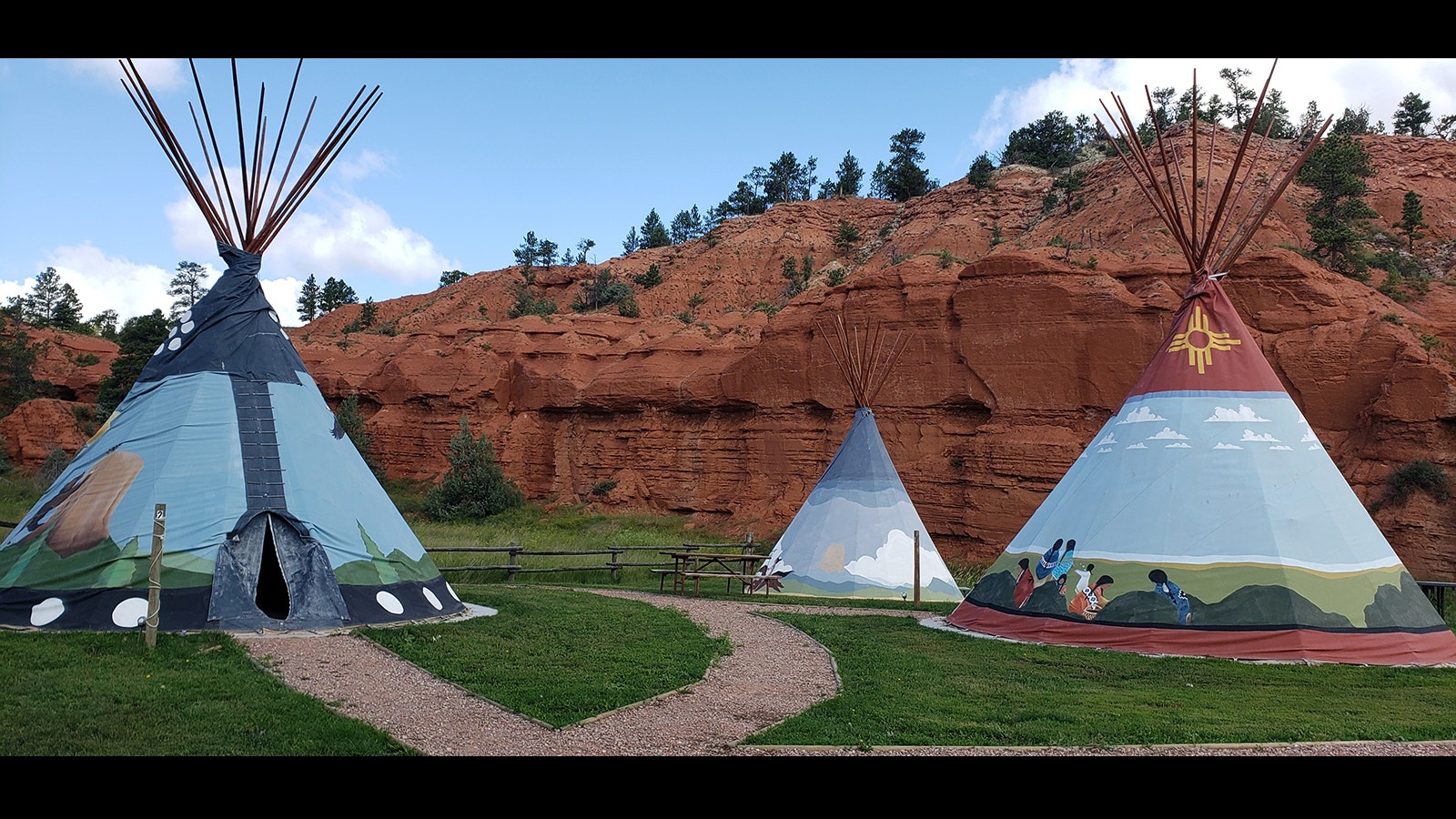
From Film Location To Campground
Turning the pasture that had been the decontamination site in the Close Encounters movie into a KOA campground was an idea from Ogden’s mother, Ellen.
KOA sites, which stands for Kampgrounds of America, were a relatively new thing at the time, started by Dave Drum, who had noticed tons of station wagons and early-model RVs camping along the sides of roads and in church parking lots on their way to the 1962 Seattle World’s Fair.
Drum talked to these travelers about their experiences and got the idea to create a commercial campground on his property with electrical hook-ups, shower facilities, a convenience store and, as a bonus, views of the Yellowstone River.
Two years later, the first KOA franchise was opened in Cody, Wyoming. Its success soon led to more KOAs all over the nation.
While the Devils Tower KOA was a passion project for Ellen, it’s turned into something more fortuitous than anyone could have foreseen, Ogden told Cowboy State Daily.
“The campground has become a much bigger deal than the ranch,” he said.
The Driskills have been expanding the campground since becoming its operators, adding new features every year, as well as adding new and better camping sites.
“We have over 100 sites now,” Zannie said. “And we have 12 cabins and 50 tent sites.”
They’ve added miniature golf and two playgrounds for children. They’re also working on a larger swimming pool, which will be shaped like a cowboy boot.
Over the years, the Driskills have had all kinds of interesting events at the campground. Balloon festivals, helicopter rides, rodeos — whatever seemed interesting to campers at the time.
Baxter Black performed there for Devils Tower National Monument’s centennial, and Teddy Roosevelt the Fourth came to speak.
Why Devils Tower Was Spielberg’s One
Fresh off his highly successful blockbuster “Jaws,” a young Spielberg suddenly had a lot more latitude for his next production. He sent production designer and location scout Joe Alves out into the world to find something with unusual topography.
Alves could have chosen anywhere in the world for “Close Encounters of the Third Kind,” but he knew as soon as he saw Devils Tower that he’d found the place.
Spielberg was just as excited as Alves by the tower, and both have said it helped fuel their creativity for the movie.
Neither of them knew about the tower’s history, nor its spiritual significance to American Indian tribes, but believed it just helped underscore the wonder of the stars and all the other themes in the film.
If aliens were to come to Earth, why wouldn’t they choose a place like Devils Tower, which has been inspiring mankind for thousands of years?
How Hollywood Makes Deals
Ogden remembers when Spielberg came to visit his family to talk about filming a portion of his next movie in one of the family’s pastures.
The National Park Service had turned Spielberg down, but the Driskill ranch, which surrounds the monument on two sides, was the perfect location.
“He met personally with my parents and didn’t have anybody with him,” Ogden told Cowboy State Daily. “He was wearing a turquoise necklace and had a man purse. They talked for quite a while and kind of made the deal and, if I remember right, they went out somewhere to eat.”
Ogden didn’t get to be among extras in the film, though. His dad, Jesse Driskill, told Ogden he’d be too busy with chores to mess with “such nonsense.”
“My best friend Scott Robinson was in the movie,” Ogden said. “He was one of the soldiers coming up the hill.”
Ogden did, however, make good friends with all the helicopter pilots who were part of the production. Good enough friends that when it came time for Ogden to head to Boys State in Douglas, they flew him there.
Ogden explained in a previous Cowboy State Daily story that the pilots’ contract stated they had to fly a certain number of hours every day. That particular day, they had nothing else on their itinerary. Ogden boarded a helicopter and all 19 of them took off in a flock, dropping him off in Douglas.
That was a pretty cool trip for a 16-year-old boy at the time, though it probably didn’t help his chances at Boys State, which is a hands-on civics lesson on local, county and state government.
Driskill ran for governor at Boys State, but wasn’t elected.
Despite that, watching the filming was a “wonderful time.”
“We stood around and watched the actors,” he said. “They put a big catering tent up at what’s Devils Tower Gulch now and they fed (200 to) 300 people a night. If you worked even a little bit of time on the movie, you got to go up there and eat. And then they paid everyone in cash for the movie. They had a payroll person there and he payed you to the nearest $20.”
Continuing To Inspire Humanity
Spielberg chose Devils Tower for his movie and Freeman chose it for his documentary because it’s a truly inspiring sight.
In fact, Devils Tower has been inspiring humanity for 10,000 years, when American Indians named it Bear Lodge, or Bear Teepee. It is still important to American Indians today. The Lakota religion, for example, identifies it as one of the power points of the world.
Freeman, along with Lakota Chief Arvol Looking Horse, filmed the Devils Tower segment of the documentary in probably the most distinctive area of the Devils Tower KOA. In the back of the campground, red canyon walls provide a dramatic backdrop, while the tower looks over all.
Since then, the Driskills have placed five fairly primitive teepees, painted with scenes that retell American Indian legends about Devils Tower. Those white teepees really stand out against the red canyon walls. That area also, on the other side of the fence, has the Devils Tower National Monument’s Red Banks Trail running through it.
Zannie believes the teepees are probably the best location in the campground for those inspired by the tower and the stars. The teepees are where the campground is darkest and that is where it’s easiest to see the Milky Way crowning the night and Devils Tower.
That dark sky is something the Driskills are working hard to preserve.
“The lights we have around the shower house and stuff, we keep those lights really low,” Zannie said. “We don’t have the ones that go high up in the sky.”
An astronomer from Gillette often comes during the summer to do star parties. Nearby, Devils Tower National Monument’s staff also hold star parties to point out American Indian constellations.
By the time the nightly showing of “Close Encounters of the Third Kind” ends, stars have all come out for the evening, a kind of encore performance for all those who dream of what’s out there in the final frontier.
In the teepee area, Devils Tower stands like a shadow against the night amidst the twinkling of tiny lights trillions of years old.
It’s a sight that is truly like no other in the world.
Renée Jean can be reached at renee@cowboystatedaily.com.


